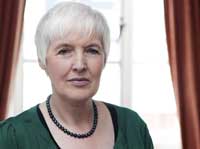
A “description of the ideal child protection system” was how directors of children’s services labelled Professor Eileen Munro’s interim report on the child protection system in England, published on Tuesday.
The report made proposals on early intervention, inspection, serious case reviews, supervision and career structure intended to help children’s social workers become reflective, effective practitioners with more time to spend with families and implementing evidence-based practice.
Although Munro acknowledged possible threats such as reforms to health and education, and serious budget cuts, it is clear that her brief is to propose what should happen, not what is necessarily likely to happen. That is for the government response to her final report.
So what would a child protection working day look like under Munro’s “ideal”?
LESS PRESSURE
Munro proposes sharing the burden of child protection across all agencies rather than leaving social services to bear the brunt, particularly around early intervention.
This would be achieved through multi-agency teams of social workers, police and health embedded in communities and universal services. Social workers would be available to provide advice to teachers or police officers and help advise on the best intervention.
The improved advice on the frontline should lower referrals to children’s child protection teams.
“This approach allows professionals and practitioners to have access to social work expertise, helping them to make better use of their closer knowledge and engagements with the child and family,” Munro wrote. “More specifically, the professional anxiety that exists in trying to understand the severity of their concerns about a child is lessened.”
It would be twinned with existing roles such as named and designated health professionals or safeguarding leads in schools. Munro points out how important these roles are – not only do these professionals help identify problems, she says, but they also ensure better support coverage for vulnerable children who fall just short of child protection thresholds.
MORE SUPPORT
The Munro review is considering whether the current social work manager’s role should be split so that managerial oversight is distinct from supporting critical reflection.
“Good social work practice requires forming a relationship with the child and family and using professional reasoning to judge how best to work with parents. The nature of this close engagement means that supervision, which provides the space for critical reflection, is essential for reducing the risk of errors in professionals’ reasoning.”
This stable, ongoing supervision is also required to help frontline workers adopt more evidence-based practice, Munro added. “Currently, few social workers have detailed training in any evidenced method and this seriously limits their ability to help children stay safely with their birth family.”
Such a split would also provide the ideal conditions for a new career structure, more akin to those in medicine and nursing. Social workers could choose to become more expert and specialist in clinical fields, instead of going into council management. This would also create a network of expert, frontline professionals able to support a possible chief social worker role.
BETTER RESOURCES
While the ideal would be to allow children’s social workers more time working with families, Munro also points out that many social workers lack the training and tools necessary to develop productive relationships with the children they seek to protect.
One question is whether social workers feel adequately trained to communicate with children. “They may work with children of varied ages, ethnicities, and communication abilities who require an equally varied range of skills in the social worker,” says the report.
However, Munro also pointed out that the right tools also give practitioners a boost in this area. Her report highlights the Three Houses model which presents workers with a series of techniques using a combination of play, conversation and drawings to bring out what a child is feeling and thinking.
The integrated children’s system should also be changed to ensure it is a tool to help social workers rather than a problem that makes errors more likely to occur, she stated.
She says there is enthusiasm for a return to family files, with individual family files within, and says files should also incorporate a variety of media such as digital videos and photographs to provide additional and more meaningful information about a case.
There is much less in the latest report than in her first installment, however, about ICS becoming an intuitive decision-making tool similar to those used in the airline industry and medicine. It seems likely that, even in an ideal world, Munro recognised that there is a pretty big mountain for ICS to climb.
What do you think? Join the debate on CareSpace
Keep up to date with the latest developments in social care Sign up to our daily and weekly emails
For all related articles go to our Munro review special report page


 Assistive technology and dementia: practice tips
Assistive technology and dementia: practice tips  A trauma-informed approach to social work: practice tips
A trauma-informed approach to social work: practice tips 




 Find out how to develop your emotional resilience with our free downloadable guide
Find out how to develop your emotional resilience with our free downloadable guide  Develop your social work career with Community Care’s Careers and Training Guide
Develop your social work career with Community Care’s Careers and Training Guide  ‘Dear Sajid Javid: please end the inappropriate detention of autistic people and those with learning disabilities’
‘Dear Sajid Javid: please end the inappropriate detention of autistic people and those with learning disabilities’ Ofsted calls for power to scrutinise children’s home groups
Ofsted calls for power to scrutinise children’s home groups Seven in eight commissioners paying below ‘minimum rate for home care’
Seven in eight commissioners paying below ‘minimum rate for home care’
 Facebook
Facebook X
X LinkedIn
LinkedIn Instagram
Instagram
Comments are closed.